Pepper (Hot) - Devil's Tongue, Yellow 🔥🔥🔥🔥🔥
From $499 USDUnit price /UnavailableDescription
The Yellow Devil’s Tongue pepper plants produce legions of 2"-3" tapered fruits that wrinkle and ripen from light green to bright yellow to golden yellow, and have a sweet, citrusy flavor. If you’re tempted to set your own tongue ablaze and have idle hands, push up some daisies and plant this pepper. Makes a scorching hot sauce or wicked pickles.- High yields
- Sweet, citrusy flavor
- Harvest any color
- Good for containers
SEED PLANTING TIPS
- Botanical name: Capsicum chinense
- Pepper length: 2"-3"
- Scoville heat units (SHU): 300,000-500,000/extra hot
- Plant support: Tomato cage or stake
- Depth to plant seeds: .25" deep
- Spacing between plants: 18"-24" apart
- Spacing between rows: 24"-36" apart
- Days to germinate (sprout): 7-21 days
- Germination soil temps: 75F-85F
- Soil needs: 6.0-7.0 pH
- Sun needs: Full sun
- Frost hardy: No
- Planting season: Spring, summer
- # of plants per sq. ft.: Appx. 1 plant per sq. ft.
- Days to maturity: 90-110 days
Good companion plants: Basil, Carrot, Cucumber, Eggplant, Okra, Rosemary, Sage, Squash, Tomato
- One plant can produce hundreds of peppers!
All Peppers ⟐ Hot Peppers 📚 Hot Peppers Grow Guide Melon (Honeydew)- Orange Flesh
From $399 USDUnit price /UnavailableDescription

- This is a delicious melon with a sweet orange flesh
-
Days to Maturity | 85-100 days
-
Melon Seeds | Because of the long growing season, start plants indoors 4 to 5 weeks before outdoor planting time. Direct sow 4-5 seeds in a hill and then thin to the appropriate spacing.
Click here for complete Melon grow guide
- From $399 USDUnit price /Unavailable
Description

- Mild, sweet, onion-like flavor
- A very hardy variety
- Blue-green leaves resemble giant scallions
-
Days to Maturity | 100 days
-
Leek Seeds | Plant leeks in the spring, and late in the summer or fall. Plant leek seedlings 8-10 inches apart
Click here for complete Leek grow guide
- Mild, sweet, onion-like flavor
- From $399 USDUnit price /Unavailable
Description

- The Giant Red mustard is a full-flavored mustard green
- The bright purple-tinted leaves and green midribs add color and zest to salads and sandwiches
-
Dasy to Maturity | 50 days
-
Mustard Seeds | When growing from seed, start them outdoors 3 weeks before the last frost. Plant seeds a 1/2" deep, and thin to 3 inches.
Click here for complete Mustard grow guide
Additional DetailsMustard is high in Vitamin A, B, and C. Mustard greens are very popular in the southern U.S. where they are generally slow-cooked with ham hocks or other smoked-pork products. Asian cuisines generally use mustard greens pickled or stir-fried.
- The Giant Red mustard is a full-flavored mustard green
Pepper (Hot) - Habanero, Lemon 🔥🔥🔥🔥
From $499 USDUnit price /UnavailableDescription

Yellow like the sun and hot as blazes describes the Lemon Habanero Pepper. If that scares you, there’s a Yellow Banana Pepper and a cup of milk waiting for you in the nursery. Everyone else can pull up a chair to the big kids’ table. This prolific plant produces lots of 2" wrinkled, waxy fruits that ripen from bright green to bright yellow to smoky golden yellow. The fruity fragrance draws you in, the citrusy flavor sits you down, and then 200,000-300,000 Scoville heat units (SHUs) of pure heat blaze across your tongue. Where’d you say that milk is again?
- Very high yields
- Fruity and citrusy
- Hot enough to make a cow go meow
- Good for containers
SEED PLANTING TIPS
- Botanical name: Capsicum chinense
- Pepper length: 1"-2"
- Scoville heat units (SHU): 200,000-300,000/very hot
- Plant support: Tomato cage or stake
- Depth to plant seeds: .25" deep
- Spacing between plants: 18"-24" apart
- Spacing between rows: 24"-36" apart
- Days to germinate (sprout): 10-30 days
- Germination soil temps: 75F-85F
- Soil needs: 5.0-6.0 pH
- Sun needs: Full sun
- Frost hardy: No
- Planting season: Spring, summer
- # of plants per sq. ft.: Appx. 1 plant per sq. ft.
- Days to maturity: 85-105 days
Good companion plants: Basil, Carrot, Cucumber, Eggplant, Okra, Rosemary, Sage, Squash, TomatoAll Peppers ⟐ Hot Peppers 📚 Hot Peppers Grow Guide Watermelon - Moon & Stars (Yellow-flesh)
From $399 USDUnit price /UnavailableDescription
- The Moon & Stars Watermelon dark green rind and bright yellow spots
- Yellow spots are very unique and can be small or large in size
- All American classic heirloom watermelon - Deep yellow flesh
- Grows over 40 lbs
-
Days to Maturity | 90 days
-
Watermelons are heat-loving plants that need lots of sun. They grow on a long vine, so make sure to give them plenty of space to roam around.
- The Moon & Stars Watermelon dark green rind and bright yellow spots
Corn Salad (Mache - Lamb's Lettuce) - Dutch
From $399 USDUnit price /UnavailableDescription
-
Valerianella locusta (aka Corn Salad) is a small annual plant that is eaten as a leaf vegetable. It has a characteristic nutty flavor, dark green color, and soft texture, and is popularly served as salad greens. //Wikipedia
- Corn Salad has a delicate flavor, similar to a butterhead lettuce. It is quite hardy and requires very little care while remaining practically free of pests & disease. Corn salad is also known for growing vigorously in almost any soil!
- We think Corn Salad tastes best right out of the garden with a light drizzle of olive oil and a squeeze of fresh lemon. Once you try this cold-hardy green, you'll be sure to make it a staple in your fall/winter gardens every year.
-
Day to Maturity | only 40 days
-
Valerianella locusta (aka Corn Salad) is a small annual plant that is eaten as a leaf vegetable. It has a characteristic nutty flavor, dark green color, and soft texture, and is popularly served as salad greens. //Wikipedia
- From $399 USDUnit price /Unavailable
Description

-
Member of the squash family. Produces an assortment of small gourds of various shapes, sizes, and colors
- Excellent for making crafts, birdhouses, dippers, and ornaments
- Great for arts & crafs projects
- The hard-rinded fruits can have carving done to create scenes raised in relief, painting, and wood burning are also used to decorate the shells
-
Member of the squash family. Produces an assortment of small gourds of various shapes, sizes, and colors
- From $399 USDUnit price /Unavailable
Description
- The Tatsoi mustard produces dark green spoon shaped leaves
- Popular oriental green
- Excellent for hydroponic systems
- Highly resistant to cold and grows well during the winter months
-
Days to Maturity | 55 days
- Click here for complete Mustard grow guide
Additional DetailsMustard is high in Vitamin A, B, and C. Mustard greens are very popular in the southern U.S. where they are generally slow-cooked with ham hocks or other smoked-pork products. Asian cuisines generally use mustard greens pickled or stir-fried.
- The Tatsoi mustard produces dark green spoon shaped leaves
- From $399 USDUnit price /Unavailable
Description
- Plant produces good yields of egg shaped tomatoes.
- The tomatoes are the size and shape of an egg.
- A firm tomato that keeps well. Does well in poor growing conditions.
SEED PLANTING TIPS
- Botanical name: Solanum lycopersicum
- Growth type: Indeterminate, trellis support, regular pruning
- Tomato size: Small
- Depth to plant seeds: 1/8" deep
- Spacing between plants: 24" apart
- Spacing between rows: 36"-48" apart
- Days to germinate (sprout): 7-14 days
- Germination soil temps: 75F-95F
- Soil needs: 6.0-6.5 pH
- Sun needs: Full sun
- Frost hardy: No
- Planting season: Spring, summer
- # of plants per sq. ft.: Appx. 1 plant per 2 sq. ft.
- Days to maturity: 75-80 days
Click here to view our full Tomato grow guide
Good companion plants: Basil, Borage, Onion, Parsley, Pepper
- Plant produces good yields of egg shaped tomatoes.
Cardoon (Purple Artichoke Thistle)
From $399 USDUnit price /UnavailableDescription
 Cardoon is an artichoke thistle. It has become an extremely important medicinal herb in recent years following the discovery of cynarin.
Cardoon is an artichoke thistle. It has become an extremely important medicinal herb in recent years following the discovery of cynarin.
The cardoon is related to the Globe artichoke.
Cardoons are recognized as a good source of potassium, calcium and iron. Artichoke oil, which is similar to sunflower or safflower oil, can be extracted from the seeds.
Cardoons can be baked, braised or boiled, and it's often a good idea to blanch them for up to 30 minutes before using them. Watch-out! Beware of sneaky thistles that may be lurking on the outer stalks -- (it's best to peel the outside a bit.)Cardoons are excellent fried! Try them simmered in broth, or added to a stew. If you're a cheesemaker, the purple stamens of the cardoon flower can be used to make vegetarian rennet!
See Cardoon Recipes & Growing Tips on our Pinterest Board
Pepper (Hot) - Pretty Purple 🔥🔥🔥🔥
From $499 USDUnit price /UnavailableDescription

An edible ornamental, the Pretty Purple Pepper loves an audience. Compact plants produce an ensemble of 1"-2" tapered fruits that lift their tips in a glorious chorus line of mini rockets, going through several costume changes in green, purple, yellow, orange, and red. The show goes on when you bite into one. With a searing purple heat in tune with the Habaneros and the Scotch Bonnets, you’ll be singing and dancing in your own Broadway musical. Assemble several plants to choreograph a border, or give one the spotlight in a nice container/pot, and let it audition for your next spicy production.The Purple Cayenne Pepper is just as purple and pretty, but with less drama.
- High yields
- Edible ornamental
- Harvest any color
- Good for containers
SEED PLANTING TIPS
- Botanical name: Capsicum annuum
- Pepper length: 1"-2"
- Scoville heat units (SHU): 200,000-350,000/very hot
- Plant support: None - they support each other
- Depth to plant seeds: 1/8" deep
- Spacing between plants: 6"-12" apart
- Spacing between rows: 18"-24" apart
- Days to germinate (sprout): 7-21 days
- Germination soil temps: 75F-85F
- Soil needs: 6.0-7.0 pH
- Sun needs: Full sun
- Frost hardy: No
- Planting season: Spring, summer
- # of plants per sq. ft.: Appx. 2-4 plants per sq. ft.
- Days to maturity: 90-120 days
Good companion plants: Basil, Carrot, Cucumber, Eggplant, Okra, Rosemary, Sage, Squash, Tomato
All Peppers ⟐ Hot Peppers 📚 Hot Peppers Grow Guide - From $399 USDUnit price /Unavailable
Description
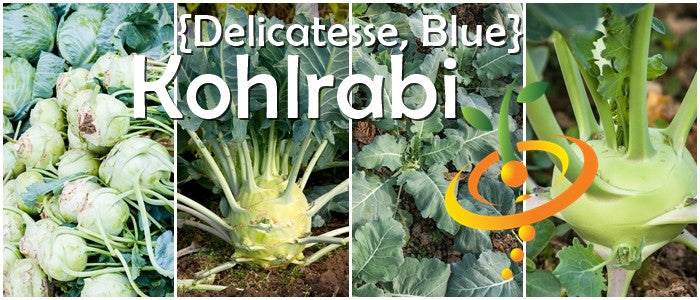
- This Kohlrabi variety produces extremely tender round bulbs
- Best to harvest when bulbs reach 4" across
- Well known for uniform size and disease resistance
- Kohlrabi looks like a turnip growing above-ground
-
Days to Maturity | 55-60 days
-
Kohlrabi Seeds | Grow Kohlrabi in loose, average soil. Direct-sow your seeds 4 to 6 weeks before the last frost in your growing zone; about ¼ inch deep, and 10 seeds per foot.
Click here for complete Kohlrabi grow guide
Kohlrabi is one of the most commonly eaten vegetables in Kashmir. Locally called monj, the vegetable is eaten along with the leaves (haakh). A Kashmiri household may have this on their dinner or lunch plates three to four times a week.
- This Kohlrabi variety produces extremely tender round bulbs
Wildflowers - Beneficial Insect Garden Seed Mix
From $499 USDUnit price /UnavailableDescription
 Plant this mix to attract beneficial insects such as ladybugs, lacewings, ground beetles and other insects that feed on pests.
Plant this mix to attract beneficial insects such as ladybugs, lacewings, ground beetles and other insects that feed on pests.
Wildflower establishment requires some important steps:- Site selection/preparation: It's important to address competition from weeds: pull, till, or use organic herbicides. If planting in the spring/summer you can wait for weeds to germinate, control and then plant the wildflower seeds.
- Seeding: You will want to have good seed to soil contact, broadcasting by hand is a good approach on small plot, may want to mix with an inert carrier, sand or other. Raking in and covering with soil 2-3 times seed thickness.
- Watering: During establishment for the first month, can be from rain in spring or supplement with irrigation.
- Timing: The best time to plant is in spring to early summer and even again in late fall.
This mix includes all of the following seed varieties:GENUS/SPECIES
COMMON NAME
TYPE
HEIGHT
COLOR

Achillea millefolium
White Yarrow
P
12 to 36
White

Gypsophila elegans
Baby's Breath
A
8 to 18
White

Iberis umbellata
Candytuft
A
12 to 18
White/Pink/Violet

Layia platyglossa
Tidy Tips
A
6 to 12
Yellow-White

Lobularia maritima
Alyssum
TP
8 to 16
White

Nemophila menziesii
Baby Blue Eyes
A
4 to 12
Blue

Phacelia campanularia
California Bluebells
A
8 to 20
Blue

Trifolium repens
White Dutch Clover
P
4 to 10
White
Annual
50%
Perennial
50%
Onion - Walla Walla Sweet (Long Day)
From $399 USDUnit price /UnavailableDescription

- The Walla Walla Sweet Onion variety will produces a globed shaped white onion
- Bulbs can reach 2 lbs
- This is one of the most popular Long day onion varieties available
- Easy to grow
- Perfect for beginners
- Grows well in containers and tight spaces
-
Days to Maturity | 110-120 days
Onion Seeds | Onions are easy to grow, have a fairly short growing period and take up little space in the garden. Plant onions 1/4 inch deep and 3 to 4 inches apart in double rows, leaving 6 to 10 inches between rows.
Click here for complete Onion grow guide
- The Walla Walla Sweet Onion variety will produces a globed shaped white onion
- From $399 USDUnit price /Unavailable
Description

- Levisticum officinale. Perennial.
- Plant produces glossy dark green leaves that have a flavor similar to Celery.
- Known for the treatment of digestive problems
- A teaspoon of Lovage seeds, steeped in Brandy, strained and sweetened with sugar is on old remedy for settling an upset stomach
- Plant Height: 80" tall
- Days to Maturity | 85 days
- Levisticum officinale. Perennial.
- From $499 USDUnit price /Unavailable
Description
- Perennial
- Low growing plant produces green leaves
- Used in salads and cooked like spinach
- Purslane is said to be effective in treatment of insect or snake bites on the skin, boils, sores, pain from bee stings, bacillary dysentery, diarrhea, hemorrhoids, postpartum bleeding, and intestinal bleeding
- Plant grows in poor soil and tolerates drought
⚠️ Always consult with your doctor and primary care provider before using or consuming herbs, flowers, seeds and/or plants for medicinal purposes.
Sprouts/Microgreens - Barley Grass
From $399 USDUnit price /UnavailableDescription

- Organic.
- Known as the the famous nutritious Super Green supplement.
- It is even more nutritious in the form of raw juice.
- Ideal for juicing.
- Can be ground up for Barley flour and bread.
- Extremely healthy and nutritious.
- Days to Harvest | Barley grass will be ready to harvest in appx. 6 to 10 days
- Organic.
- From $399 USDUnit price /Unavailable
Description
Yellow Canary Swiss Chard
-
The Yellow Canary Swiss Chard is a popular plant that produces some of the most amazing looking swiss chard leaves in a bright shades of yellow.
- Perfect for salads or steamed greens.
- One of this years most popular varieties to grow.
- Extremely healthy.
- Easy to grow.
-
Day to Maturity | 65 days
Additional DetailsSwiss chard is high in vitamins A, K and C, with a 175g serving containing 214%, 716%, and 53%, respectively, of the recommended daily value. It is also rich in minerals, dietary fiber and protein.
-
The Yellow Canary Swiss Chard is a popular plant that produces some of the most amazing looking swiss chard leaves in a bright shades of yellow.
Spinach - Monstrueux De Viroflay
From $399 USDUnit price /UnavailableDescription
Monstrous Viroflay spinach is a variety of spinach known for its large, dark green leaves and delicious flavor. It is a popular choice among gardeners and spinach enthusiasts due to its impressive size and nutritional value.
This variety of spinach is named after the town of Viroflay in France, where it was first cultivated. It is known for its vigorous growth and ability to produce abundant harvests.
Monstrous Viroflay spinach is rich in vitamins A, C, and K, as well as iron, calcium, and fiber. It is a nutrient-dense leafy green that can be enjoyed in a variety of dishes, including salads, sautés, and smoothies.
One of the key features of Monstrous Viroflay spinach is its size. The leaves can grow up to 10 inches long, making them perfect for salads or as a side dish. The large leaves also make it easier to harvest and prepare the spinach.
When growing Monstrous Viroflay spinach, it is important to provide it with well-drained soil and ample sunlight. This variety thrives in cool weather and can be planted in early spring or late summer for a fall harvest.
Monstrous Viroflay spinach is a versatile and nutritious addition to any garden or kitchen. Its impressive size, delicious taste, and health benefits make it a favorite among spinach lovers.
-
How to Grow | Spinach is very hardy and can tolerate cold — in fact, it thrives in cold weather. Spinach grows really well during winter months in the South. Spinach also grows well in early spring and late summer in the North. These seeds should be planted about four weeks before your area's average date of last frost.
- Days to Maturity | 45 days
-
How to Grow | Spinach is very hardy and can tolerate cold — in fact, it thrives in cold weather. Spinach grows really well during winter months in the South. Spinach also grows well in early spring and late summer in the North. These seeds should be planted about four weeks before your area's average date of last frost.
Tomato - Marglobe Supreme (Indeterminate)
From $399 USDUnit price /UnavailableDescription
The Marglobe Supreme Tomato has been producing reliable yields of marvelous scarlet globes with supreme tomato flavor for more than 100 years. These time-tested juicy slicers are smooth, firm, and stocky with good old-fashioned tomato flavor. Supremely satisfying when eaten fresh, canned, or sun-dried.
- Juicy slicers
- Reliable producer
- Good tomato flavor
- Good fresh or cooked
SEED PLANTING TIPS
- Botanical name: Solanum lycopersicum
- Growth type: Indeterminate, trellis support, regular pruning
- Tomato size: Medium
- Depth to plant seeds: .25" deep
- Spacing between plants: 24" apart
- Spacing between rows: 36"-48" apart
- Days to germinate (sprout): 7-14 days
- Germination soil temps: 75F-95F
- Soil needs: 6.0-6.5 pH
- Sun needs: Full sun
- Frost hardy: No
- Planting season: Spring, summer
- # of plants per sq. ft.: Appx. 1 plant per 2 sq. ft.
- Days to maturity: 70-80 days
Click here to view our full Tomato grow guide
Good companion plants: Basil, Borage, Onion, Parsley, Pepper
Wildflowers - Bee Scatter Garden Seed Mix
From $499 USDUnit price /UnavailableDescription
Plant this mix to attract bees and other beneficial pollinators. =)

Wildflower establishment requires some important steps:- Site selection/preparation: It's important to address competition from weeds: pull, till, or use organic herbicides. If planting in the spring/summer you can wait for weeds to germinate, control and then plant the wildflower seeds.
- Seeding: You will want to have good seed to soil contact, broadcasting by hand is a good approach on small plot, may want to mix with an inert carrier, sand or other. Raking in and covering with soil 2-3 times seed thickness.
- Watering: During establishment for the first month, can be from rain in spring or supplement with irrigation.
- Timing: The best time to plant is in spring to early summer and even again in late fall.- From $399 USDUnit price /Unavailable
Description
Let us tell you about Lettuce Leaf Basil. It’s a lovely Italian basil that grows huge leaves as big as your hand, with a flavor that’s sweeter and less spicy than other basils. Its crinkles hold onto dressing in salads, you need only one leaf for a sandwich or wrap, and you can use the rest as you would any other basil. Save the edible flower spikes to garnish seafood dishes and cocktails.Harvest the leaves and stems from the top part of the plant, and pinch off edible flower buds as they appear, which prevents the leaves from turning bitter, and signals the plant to branch out and grow more leaves, making a bushier plant. The more you harvest, the more it grows!
- Sweet and mild
- Huge 5"-6" leaves
- Grows 1'-2' tall
- Good for containers
- Tons of medicinal benefits!
As a medicinal herb, Basil has been used internally to treat anxiety, colds, colic, cough, depression, diarrhea, fever, flatulence, flu, indigestion, insomnia, intestinal parasites and worms, exhaustion, gastric pain, gonorrhea, lactation problems, migraine headache, nausea, stomach cramps, sore throat, and vomiting, and externally to treat acne, insect bites and stings, loss of smell, skin problems, snake bites.
⚠️ Do not use medicinally while pregnant.
⚠️ Medicinal properties are presented as information only, and are not a recommendation or prescription for use. Consult a medical professional before using any herb medicinally.
As a companion plant, Basil attracts hummingbirds, pollinators, and beneficial insects, and repels asparagus beetles, cabbage moths, cabbage white butterfly, cabbage worms, carrot rust fly, flies, maggots, mice, mosquitoes, spider mites, thrips, and tomato hornworms.
Shop all Basil Seeds Shop Good Companion Plants for Basil 📚 Grow Guide: Basil
Health Benefits of Genovese Basil
Basil is a known health tonic for expecting mothers and when mixed with tea it increases lactation in mothers. It is also a nerve tonic and young children are sometimes encouraged to chew on the leaves of basil because it stimulates brain cells and can increase memory.

See Basil Recipes & Growing Tips on our Pinterest Board
Shop all Basil Seeds Shop Good Companion Plants for Basil 📚 Grow Guide: Basil Tomato - Oxheart, Pink (Indeterminate)
From $399 USDUnit price /UnavailableDescription

Valentine’s Day is too early to grow the Pink Oxheart Tomato, but you’ll have all summer to court your sweetheart with these dark pink heart-shaped fruits. Juicy and meaty, this luscious slicer grows to 1-2 lbs. Its mild, sweet flavor is just right for a romantic picnic of tomato sandwiches, pizza and a movie, or marinated tomato tortellini by candlelight.
You may also like: Orange Oxheart Tomatoes ⟐ Yellow Oxheart Tomatoes- High yields
- Low acidity
- Small seed core
- Mild, sweet flavor
SEED PLANTING TIPS
- Botanical name: Solanum lycopersicum
- Growth type: Indeterminate, trellis support, regular pruning
- Tomato size: Large (1-2 lbs.)
- Depth to plant seeds: .25" deep
- Spacing between plants: 24" apart
- Spacing between rows: 36"-48" apart
- Days to germinate (sprout): 7-14 days
- Germination soil temps: 75F-95F
- Soil needs: 6.0-6.5 pH
- Sun needs: Full sun
- Frost hardy: No
- Planting season: Spring, summer
- # of plants per sq. ft.: Appx. 1 plant per 2 sq. ft.
- Days to maturity: 80-90 days
Click here to view our full Tomato grow guide
Good companion plants: Basil, Borage, Onion, Parsley, Pepper
Cabbage - Charleston Wakefield
From $399 USDUnit price /UnavailableDescription

- These seeds produces good yields of 4 lb heads of cabbage
- Excellent flavor and very popular
-
Day to Maturity | 75 days
-
Cabbage Seeds | Cabbage is an annual cool-season crop, hardy to frost and light freezes. Plant in rows 2 1/2 feet apart, with 12-16 inches between plants.
Click here for complete Cabbage grow guide
Did you know? Cabbage is an excellent source of vitamin C! It also contains significant amounts of glutamine, an amino acid that has anti-inflammatory properties. Cabbage can also be included in dieting programs, as it is a low calorie food.
- These seeds produces good yields of 4 lb heads of cabbage
Tomato - Bradley (Indeterminate)
From $399 USDUnit price /UnavailableDescription
The Bradley Tomato is a sweet little pink tomato. By sweet, we mean lightly sweet and slightly acidic. By little, well, that’s just what you say when you describe something darling; it’s a medium-sized fruit. As for pink, it’s a dark pink. To be precise, it’s a lightly sweet and slightly acidic medium-sized dark pink tomato. A reliable producer with good-old fashioned tomato flavor.
- Well-balanced flavor
- Dark pink color
- Reliable producer
- Good fresh or cooked
SEED PLANTING TIPS
- Botanical name: Solanum lycopersicum
- Growth type: Indeterminate, trellis support, regular pruning
- Tomato size: Medium
- Depth to plant seeds: .25" deep
- Spacing between plants: 24" apart
- Spacing between rows: 36"-48" apart
- Days to germinate (sprout): 7-14 days
- Germination soil temps: 75F-95F
- Soil needs: 6.0-6.5 pH
- Sun needs: Full sun
- Frost hardy: No
- Planting season: Spring, summer
- # of plants per sq. ft.: Appx. 1 plant per 2 sq. ft.
- Days to maturity: 75-80 days
Good companion plants: Basil, Borage, Onion, Parsley, Pepper
- From $399 USDUnit price /Unavailable
Description
 Chicory - Verona Red (100% Heirloom/Non-Hybrid/Non-GMO)
Chicory - Verona Red (100% Heirloom/Non-Hybrid/Non-GMO)- The Verona Red Chicory produces round and red cabbage like heads.
- Popular in salads
- Can be cooked as a vegetable
- Grows best during the cooler climates
- Day to Maturity | 80 days
- The Verona Red Chicory produces round and red cabbage like heads.
- From $399 USDUnit price /Unavailable
Description

- The Danish Ballhead is an old-time favorite which grows well during the winter months
- Danish Ballhead produces sizable 7-10 inch heads weighing up to 5-6 pounds/each
- The interior flesh is light green, mild, and tender
- It is a very dependable general-purpose cabbage for kraut, slaw, and cooking
- Days to Maturity | 90 days
Additional DetailsDid you know? Cabbage is an excellent source of vitamin C! It also contains significant amounts of glutamine, an amino acid that has anti-inflammatory properties. Cabbage can also be included in dieting programs, as it is a low calorie food.
- The Danish Ballhead is an old-time favorite which grows well during the winter months
- From $399 USDUnit price /Unavailable
Description
Cabbage, Brunswick
- Brassica oleracea.
- A heirloom variety dating back to 1924.
- Plant produces a large drumhead type cabbage.
- Used for making kraut.
- Suitable for spring, summer, and fall crops.
- Stores well. Suitable for home gardens and market growers.
Click here for complete Cabbage grow guideAdditional Details
Did you know? ❄️ Cabbage is an annual cool-season crop, hardy to frost and light freezes. A smaller cabbage head has better flavor and can stay in the field longer without splitting. To keep them small, plant close together or, when the head is almost full, give the plant a sharp twist to break up the roots. 😀 Cabbage is a wide spreading foliage plant with handsome leaves that form a tight, hard ball head on a strong central stem. Young plants may bolt if grown at 50F for a long time; however mature plants of late varieties improve flavor in cold weather.
Pepper (Hot) - Purple Tiger 🔥🔥
From $499 USDUnit price /UnavailableDescription
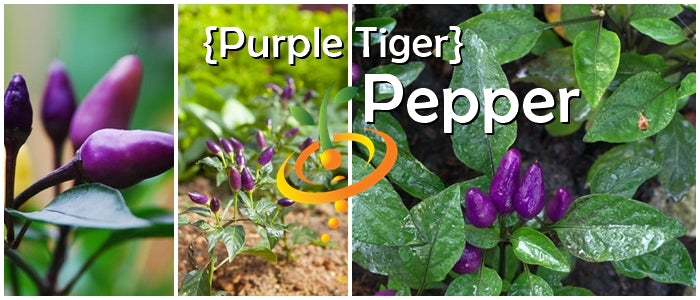
Exotic and rare, the Purple Tiger Pepper draws you to its lair with foliage in variegated colors of white, green, and purple. Slowly, slowly you’re mesmerized by the 1"-2" tapered fruit that starts off green, creeping to purple with a lighter, rosy striped pattern that ripens fully to red. And then it pounces with a low growl of heat, twice as hot a jalapeño. Stuff with cream cheese for some purple poppers, or pickle a peck of them to sprinkle on nachos.
Hunting for a heat that roars? Try the Chocolate Habanero Pepper.
- High yields
- Variegated foliage and fruit
- Harvest any color
- Good for containers
SEED PLANTING TIPS
- Botanical name: Capsicum annuum
- Pepper length: 1"-2"
- Scoville heat units (SHU): 5,000-9,000/medium
- Plant support: None
- Depth to plant seeds: 1/8" deep
- Spacing between plants: 12"-18" apart
- Spacing between rows: 18"-24" apart
- Days to germinate (sprout): 7-21 days
- Germination soil temps: 75F-85F
- Soil needs: 6.0-7.0 pH
- Sun needs: Full sun
- Frost hardy: No
- Planting season: Spring, summer
- # of plants per sq. ft.: Appx. 1 plant per sq. ft.
- Days to maturity: 90-100 days
Good companion plants: Basil, Carrot, Cucumber, Eggplant, Okra, Rosemary, Sage, Squash, Tomato
All Peppers ⟐ Hot Peppers 📚 Hot Peppers Grow Guide - From $399 USDUnit price /Unavailable
Description

- Crisp & refreshing lettuce variety
- The leaves of this particular lettuce makes it idea for use in gourmet sandwiches, burgers and salads
-
Days to Maturity | 60 days
-
Lettuce Seeds | Lettuce can be grown practically anywhere. For leaf types seed should be sown thinly in rows 1 foot apart. For head, Bibb, and cos types, space rows 18 inches apart.
Click here for complete Lettuce grow guide
- Crisp & refreshing lettuce variety
- From $099 USDUnit price /Unavailable
Description

The Romano Pole Bean is a traditional Italian heirloom bean enjoyed by generations of gardeners. The vining plant produces high yields of flat, wide, stringless 6" pods that taste best when harvested young. Just a great all-around green bean.
- Easy to grow
- Stringless variety
- Harvest young for best flavor
- Vining plant requires staking
SEED PLANTING TIPS
- Botanical name: Phaseolus vulgaris
- Depth to plant seeds: 1" deep
- Spacing between plants: 5" apart
- Spacing between rows: 18"-24" apart
- Days to germinate (sprout): 8-14 days
- Germination soil temps: 70F-85F
- Soil needs: 6.0-7.0 pH
- Sun needs: Full sun
- Frost hardy: No
- Planting season: Spring, summer, fall
- # of plants per sq. ft.: Appx. 4 plants per sq. ft.
- Days to maturity: 65-80 days
Click here to view our full Bean grow guide
Good companion plants: Cucumber, Pea, Rosemary, Thyme, Tomato
- From $399 USDUnit price /Unavailable
Description
Licorice Basil is a type of Thai basil with a pleasant, sweet licorice flavor. Beautiful as a fragrant and ornamental accent throughout the garden, and delicious in salads, baked goods, and pasta sauce. It’s also pleasant to look at with deep green leaves that sometimes show a burgundy tinge, plum-colored stems, and lavender flower spikes that make a fun garnish for any salad, dish, or drink.Harvest the leaves and stems from the top part of the plant, and pinch off edible flower buds as they appear, which prevents the leaves from turning bitter, and signals the plant to branch out and grow more leaves, making a bushier plant.
The more you harvest, the more it grows!
- Sweet, pleasant licorice flavor
- Thai basil type
- Edible ornamental
- Good for containers
- Tons of medicinal benefits!
As a medicinal herb, Basil has been used internally to treat anxiety, colds, colic, cough, depression, diarrhea, fever, flatulence, flu, indigestion, insomnia, intestinal parasites and worms, exhaustion, gastric pain, gonorrhea, lactation problems, migraine headache, nausea, stomach cramps, sore throat, and vomiting, and externally to treat acne, insect bites and stings, loss of smell, skin problems, snake bites.
⚠️ Do not use medicinally while pregnant.
⚠️ Medicinal properties are presented as information only, and are not a recommendation or prescription for use. Consult a medical professional before using any herb medicinally.
As a companion plant, it attracts hummingbirds, pollinators, and beneficial insects, and repels asparagus beetles, cabbage moths, cabbage white butterfly, cabbage worms, carrot rust fly, flies, maggots, mice, mosquitoes, spider mites, thrips, and tomato hornworms.
Shop all Basil Seeds Shop Good Companion Plants for Basil 📚 Grow Guide: Basil 
This basil variety produces lovely and flavorful green leaves with purple accents. It has a strong, but enjoyable licorice flavor and can grow up to 24" tall.

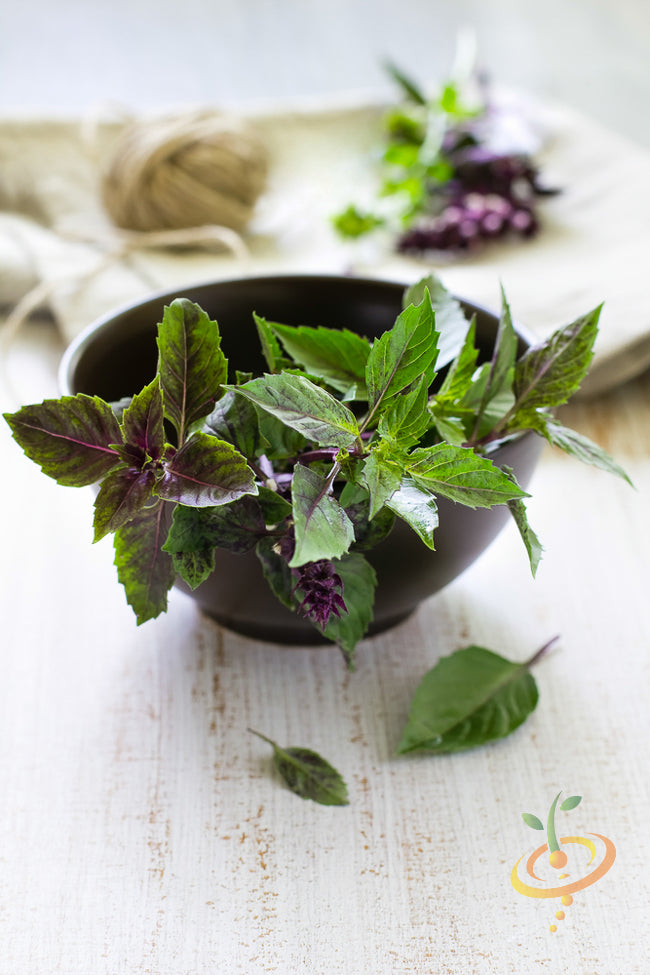
What is Licorice Basil?
This basil is a type of Thai Basil, also known as anise basil. It has strong licorice and anise flavors, qualities and aromatics. It's known to be slightly "lanky" with pointed green leaves with signature purple flowers. Both the leaves and flowers are edible on this plant.
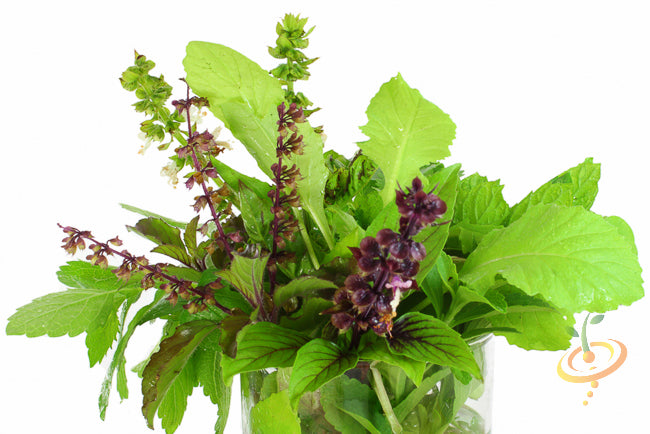
Health Benefits of Licorice Basil
Licorice Basil can be used for treating the common cold, the flu, diabetes, asthma, bronchitis, earaches, headaches, upset stomachs, heart disease, fever, and more. It promotes longevity but something you may not know is that its an excellent mosquito repellent!

Ways to Consume Licorice BasilWhen Licorice Basil leaves are crushed, they burst with intense basil and licorice aromas. Fragrant and floral, the spicy paste is a condiment for multiple dishes. This basil is best when mixed with other ingredients to tame it's powerful one-dimensional notes.

See Basil Recipes & Growing Tips on our Pinterest Board
Shop all Basil Seeds Shop Good Companion Plants for Basil 📚 Grow Guide: Basil Wildflowers - All Perennial Scatter Garden Seed Mix
From $499 USDUnit price /UnavailableDescription
 Includes a mix of 16 popular perennial flower varieties and colors. Scatter this mix of seeds in your garden and enjoy a beautiful assortment of flowers for multiple years.
Includes a mix of 16 popular perennial flower varieties and colors. Scatter this mix of seeds in your garden and enjoy a beautiful assortment of flowers for multiple years.A perennial plant or simply perennial is a plant that lives for more than two years. The term is often used to differentiate a plant from shorter-lived annuals and biennials. Wikipedia
Wildflower establishment requires some important steps:- Site selection/preparation: It's important to address competition from weeds: pull, till, or use organic herbicides. If planting in the spring/summer you can wait for weeds to germinate, control and then plant the wildflower seeds.
- Seeding: You will want to have good seed to soil contact, broadcasting by hand is a good approach on small plot, may want to mix with an inert carrier, sand or other. Raking in and covering with soil 2-3 times seed thickness.
- Watering: During establishment for the first month, can be from rain in spring or supplement with irrigation.
- Timing: The best time to plant is in spring to early summer and even again in late fall.
This mix includes all of the following seed varieties:GENUS/SPECIES
COMMON NAME
HEIGHT
COLOR

Achillea millefolium
White Yarrow
24-36"
W

Aquilegia vulgaris
Columbine
10-18"
R/V/B

Aster novae angliae
New England Aster
24-36"
B/P/W/P

Cheiranthus allionii
Siberian Wallflower
10-18"
O

Chrysanthemum maximum
Shasta Daisy
16-24"
W

Coreopsis lanceolata Dwarf
Lance-Leaf Coreopsis
18-36"
Y

Dianthus barbatus
Sweet William
12-24"
W/P/R

Echinacea purpurea
Purple Coneflower
24-36"
P

Gaillardia aristata
Blanketflower
18-30"
Y/R

Liatris spicata
Gayfeather
24-48"
P

Linum lewisii
Blue Flax
18-30"
B

Lupinus perennis
Lupine
12-36"
B

Oenothera missouriensis
Dwarf Evening Primrose
8-12"
Y

Ratibida columnifera
Mexican Hat
12-36"
R/Y

Ratibida columnifera
Prairie Coneflower
12-36"
Y

Rudbeckia hirta
Black Eyed Susan
18-30"
Y
W-White
R-Red
V-Violet
B-Blue
Y-Yellow
O-Orange
P-Purple
- From $399 USDUnit price /Unavailable
Description
Greek Basil is a small-leaf dwarf variety that grows into a tight dome, about 1’ tall and wide. A great one for containers, hanging baskets, and indoor gardens. The bright green, oval leaves and soft stems have hints of clove and anise, and keep their flavor when dried. Use this variety to flavor herb butters and vinaigrettes, and the edible flowers as a garnish or salad green.Harvest the leaves and stems from the top part of the plant, and pinch off edible flower buds as they appear, which prevents the leaves from turning bitter, and signals the plant to branch out and grow more leaves, making a bushier plant.
The more you harvest, the more it grows!
- Basil-clove-anise flavor
- Compact plant
- Good for indoor gardens
- Good for containers
- Tons of medicinal benefits!
As a medicinal herb, Basil has been used internally to treat anxiety, colds, colic, cough, depression, diarrhea, fever, flatulence, flu, indigestion, insomnia, intestinal parasites and worms, exhaustion, gastric pain, gonorrhea, lactation problems, migraine headache, nausea, stomach cramps, sore throat, and vomiting, and externally to treat acne, insect bites and stings, loss of smell, skin problems, snake bites.
⚠️ Do not use medicinally while pregnant.
⚠️ Medicinal properties are presented as information only, and are not a recommendation or prescription for use. Consult a medical professional before using any herb medicinally.
As a companion plant, it attracts hummingbirds, pollinators, and beneficial insects, and repels asparagus beetles, cabbage moths, cabbage white butterfly, cabbage worms, carrot rust fly, flies, maggots, mice, mosquitoes, spider mites, thrips, and tomato hornworms.
Shop all Basil Seeds Shop Good Companion Plants for Basil 📚 Grow Guide: Basil


See Basil Recipes & Growing Tips on our Pinterest Board
Shop all Basil Seeds Shop Good Companion Plants for Basil 📚 Grow Guide: Basil - From $199 USDUnit price /Unavailable
Description
The Purple Podded Pole Bean produces a profuse plurality of purely purple pods. View this variety vegetate vigorous verdant vines with violet developments. Stringless shells surround savory seeds.
- Easy to grow
- High yielding
- Long pods up to 7"
- Easy to harvest
SEED PLANTING TIPS
- Botanical name: Phaseolus vulgaris
- Depth to plant seeds: 1" deep
- Spacing between plants: 5" apart
- Spacing between rows: 18"-24" apart
- Days to germinate (sprout): 8-14 days
- Germination soil temps: 70F-85F
- Soil needs: 6.0-7.0 pH
- Sun needs: Full sun
- Frost hardy: No
- Planting season: Spring, summer
- # of plants per sq. ft.: Appx. 4 plants per sq. ft.
- Days to maturity: 70-75 days
Click here to view our full Bean grow guide
Good companion plants: Cucumber, Pea, Rosemary, Thyme, Tomato
Swiss Chard - Barese "Baby Leaf" Dark Green
From $399 USDUnit price /UnavailableDescription
- The Barese Swiss Chard variety produces delicious tender 10" tall dark glossy green leaves with curled edges
- A delicious baby leaf that grows quickly
- Ready to harvest in less than 30 days. Plant produces good yields of 10" tall leaves
- Excellent for salads and/or steamed with others greens
- Days to Maturity | Less than 30 days!
Additional DetailsSwiss chard is high in vitamins A, K and C, with a 175g serving containing 214%, 716%, and 53%, respectively, of the recommended daily value. It is also rich in minerals, dietary fiber and protein.
- The Barese Swiss Chard variety produces delicious tender 10" tall dark glossy green leaves with curled edges
- From $399 USDUnit price /Unavailable
Description
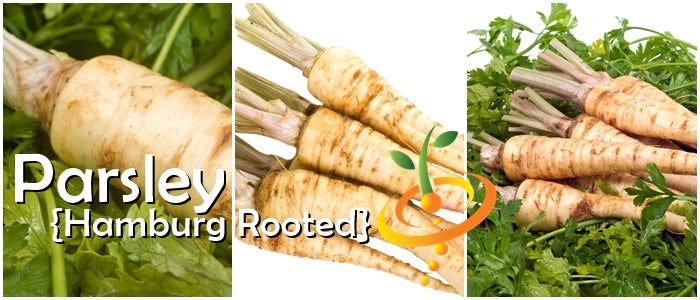
-
A very old heirloom variety dating back to the 1600's
- Hamburg Rooted Parsley is used differently than other parsley plants. It's actually preferred by many European cooks and is typically the main ingredient for many stews
- Hamburg Rooted Parsley is a large edible root with smooth mild parsley flavor
- Very easy to grow
- In Europe root parsley is usually the first choice over parsnips
-
Day to Maturity | 85 days
-
A very old heirloom variety dating back to the 1600's
Angelica (Wild Celery / Holy Ghost)
From $399 USDUnit price /UnavailableDescription
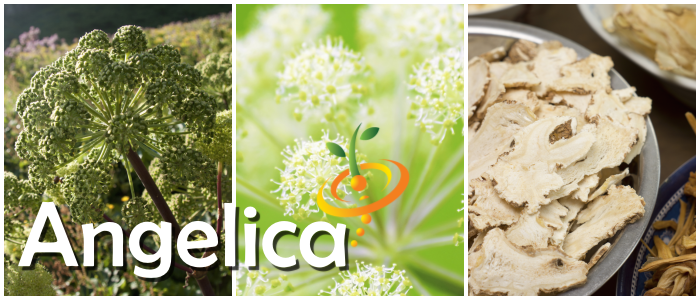
Angelica (Angelica archangelica), also called Wild Celery and Holy Ghost, is a fragrant herb in the carrot family. Like a carrot, it’s a biennial that flowers the second year, and it has a long thick root. But it’s not a carrot. For starters, it tastes like licorice. And the plant can grow to 4'-6' tall. It prefers cooler weather and growing near running water, so congrats if you’re gardening along the riverbanks of Utopia. The rest of us can just grow it in dappled shade and make sure the soil doesn’t dry out.
The flowers, leaves, seeds, stems, and roots are all edible. Peel the young, hollow, purple-tinged stems and use like celery, use the leaves like spinach, or make a tea from the leaves, flowers, seeds, and roots.
As a medicinal herb, Angelica has been used to treat anxiety, bladder infections, bronchitis, colds, cough, fever, flatulence, indigestion, insomnia, heartburn, lack of appetite, poor circulation, respiratory issues, typhus, and upset stomach.
Mild licorice flavorAll parts are edibleCulinary and medicinalGood fresh and cooked
As a companion plant, it attracts all sorts of friendly pollinators and beneficial insects.
⚠️ Medicinal properties are presented as information only, and are not a recommendation or prescription for use. Consult a medical professional before using any herb medicinally.
SEED PLANTING TIPS
- Botanical name: Angelica archangelica
- Life cycle: Herbaceous biennial
- Hardiness zones: 4-8
- Planting season: Spring, fall
- Days to maturity: 1-2 years; can begin harvesting when 6" tall
- Depth to plant seeds: Lightly cover - seeds need light to germinate
- Days to germinate (sprout): 14-28 days
- Germination soil temps: 60F-65F
- Spacing between plants: 18"-24" apart
- Spacing between rows: 24"-36" apart
- # of plants per sq. ft.: Appx. 1 plant per 2 sq. ft.
- Soil types: Clay, sandy, loamy, silty, moist, well-drained
- Soil pH: 4.5-7.4
- Sun needs: Full sun, part shade
- Water needs: High - keep soil moist
- Cold stratify: Yes
- Frost tolerant: Yes
- Heat tolerant: No
- Drought tolerant: No
- Deer resistant: No
- Culinary use: Yes
- Medicinal use: Yes
- From $399 USDUnit price /Unavailable
Description

- Needs full sun to grow well
- It is drought tolerant and rarely, if ever needs to be watered
- Rue has a long history of use as a domestic remedy, being especially valued for its strengthening action on the eyes
- The plant contains flavonoids that reduce capillary fragility, which might explain the plants reputation as an eye strengthener.
- Days to Maturity | 75 days
**Warning** Although rue is safe when used correctly, it is considered a toxic herb that can cause side effects such as severe rashes, mood swings, sensitivity to light, stomach pains, dizziness, liver and kidney damage, sleep disorders & muscle spasms.
Follow SeedsNow.com's board Rue on Pinterest. - From $399 USDUnit price /Unavailable
Description

- The Florida Giant Watermelon plant produces beautiful 45 lb round dark green watermelons
- One of the best semi-round watermelons
- Delicious bright red flesh -
Days to Maturity | 85 days
-
Best Months to Plant | [April - June] Watermelons are heat-loving plants that need lots of sun. They grow on a long vine, so make sure to give them plenty of space to roam around.
- The Florida Giant Watermelon plant produces beautiful 45 lb round dark green watermelons
- From $399 USDUnit price /Unavailable
Description
View all bean seeds
The Thorogreen Lima Bean is a high-yielding heirloom that loves higher temperatures. Plump, light green pods grow at the top of a compact plant for easy harvesting. Both fresh and dried beans have a smooth, buttery flavor. When eating fresh, be sure to cook them, as raw beans are toxic. This compact bush-type plant spreads wider than green beans, so give them room to grow.
- Easy to grow
- Bush growth habit
- Heat loving
- Early producer
SEED PLANTING TIPS
- Botanical name: Phaseolus lunatus
- Depth to plant seeds: 1.5" deep
- Spacing between plants: 6"-8" apart
- Spacing between rows: 24"-30" apart
- Days to germinate (sprout): 10-21 days
- Germination soil temps: 70F-90F
- Soil needs: 6.0-7.0 pH
- Sun needs: Full sun
- Frost hardy: No
- Planting season: Spring, summer, fall
- # of plants per sq. ft.: Appx. 2-4 plants per sq. ft.
- Days to maturity: 65-75 days
Click here to view our full Bean grow guide
Good companion plants: Cucumber, Pea, Rosemary, Thyme, Tomato
- From $399 USDUnit price /Unavailable
Description
- Cal Sweet is one of the sweetest tasting and most popular watermelon varieties available
- A commercial grower favorite - sells well at farmers markets
- Dark green stripes on the exterior with bright red flesh
- Grows to appx. 35 lbs
- Perfect-sized watermelon for any-sized backyard
-
Days to Maturity | 90 days
-
Watermelons are heat-loving plants that need lots of sun. They grow on a long vine, so make sure to give them plenty of space to roam around.
Follow SeedsNow.com's board Watermelon on Pinterest. - Cal Sweet is one of the sweetest tasting and most popular watermelon varieties available
- From $399 USDUnit price /Unavailable
Description

-
The Atlantic Giant pumpkin has been known to grow over 1,500 pounds! Without special treatment, the Atlantic Giant Pumpkin, can grow up to 200 to 300 pounds - easily
- It's best to plant 4 to 5 seeds per hill with hills at least 8 feet apart
-
Days to Maturity | 120 days
-
How to Grow Super Giant MEGA Pumpkins
Additional Details
The word pumpkin originates from the word pepon, which is Greek for “large melon". The French adapted this word to pompon, which the British changed to pumpion and later American colonists changed that to the word we use today, "pumpkin".
-
The Atlantic Giant pumpkin has been known to grow over 1,500 pounds! Without special treatment, the Atlantic Giant Pumpkin, can grow up to 200 to 300 pounds - easily
Cucumber - Armenian, White (Metki Serpent Melon)
From $399 USDUnit price /UnavailableDescription
- These Armenian cucumber seeds will produce delicious white cucumbers as long as 30"!
- Bitter-free with excellent flavor
-
Excellent slicer and ideal for salads and many culinary dishes
- Easy to grow
-
Days to Maturity | 65 days
-
Cucumber Seeds | Grow cucumbers where a long, warm growing season, minimum 65 days, can be assured. Plant seeds where there is ample space and vines can sprawl, the simplest way is to plant cucumbers in hills.
Click here for complete Cucumber grow guide
- These Armenian cucumber seeds will produce delicious white cucumbers as long as 30"!
Cover Crop - Clover (Red Crimson)
From $499 USDUnit price /UnavailableDescription
Quick Overview
• Biennial
• Bees love clover!
Details
Planted spring, summer or fall, this quick growing clover is the most versatile variety for a green manure to enrich soil. Needs good moisture. Flowers are used for tea. Excellent forage and cover crop. Planting rate: ½ lb. per 1,000 sq. ft.Corn Salad (Mache - Lamb's Lettuce) - French
From $399 USDUnit price /UnavailableDescription
- Valerianella locusta (aka Corn Salad) is a small annual plant that is eaten as a leaf vegetable. It has a characteristic nutty flavor, dark green color, and soft texture, and is popularly served as salad greens. //Wikipedia
- Corn Salad has a delicate flavor, similar to a butterhead lettuce. It is quite hardy and requires very little care while remaining practically free of pests & disease. Corn salad is also known for growing vigorously in almost any soil!
- We think Corn Salad tastes best right out of the garden with a light drizzle of olive oil and a squeeze of fresh lemon. Once you try this cold-hardy green, you'll be sure to make it a staple in your fall/winter gardens every year.
-
Day to Maturity | only 40 days
Pepper (Hot) - Hungarian Hot Wax 🔥
From $399 USDUnit price /UnavailableDescription

Zippy and snappy, the Hungarian Hot Wax Pepper offers a little sweet and a little heat, producing loads of peppers earlier than other varieties. Long 6" tapered fruit ripens from green to creamy yellow, which is when it’s just getting zippy. If you leave it be, it will keep going to orange and then red, increasing the heat with each color change. Thin-skinned, meaty, and crunchy. Try pickling in apple cider vinegar, frying up with onions to top an omelet, or stuffing with prosciutto and provolone.- Very high yields
- Meaty and crunchy
- Early producer
- Good for a short growing season
SEED PLANTING TIPS
- Botanical name: Capsicum annuum
- Pepper length: 4"-6"
- Scoville heat units (SHU): 2,000-10,000/mild to medium
- Plant support: Tomato cage or stake
- Depth to plant seeds: .25" deep
- Spacing between plants: 18"-24" apart
- Spacing between rows: 24"-36" apart
- Days to germinate (sprout): 7-21 days
- Germination soil temps: 75F-85F
- Soil needs: 6.0-7.0 pH
- Sun needs: Full sun
- Frost hardy: No
- Planting season: Spring, summer
- # of plants per sq. ft.: Appx. 1 plant per sq. ft.
- Days to maturity: 65-75 days
Good companion plants: Basil, Carrot, Cucumber, Eggplant, Okra, Rosemary, Sage, Squash, Tomato
All Peppers ⟐ Hot Peppers 📚 Hot Peppers Grow Guide Squash (Summer) - Marrow, Green
From $399 USDUnit price /UnavailableDescription
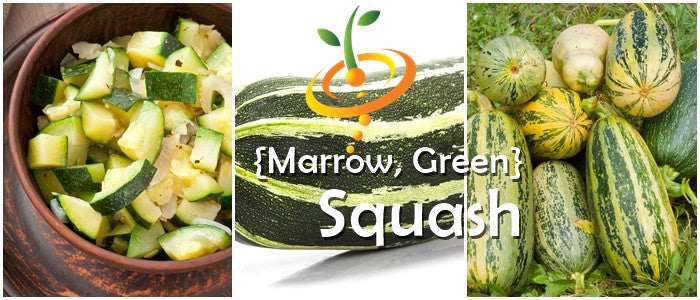
- The Green Marrow Summer Squash produces some of the most beautiful looking dark green squash
- Grows as a compact bush (not as a vine)
- Best when picked at 8" long
- Perfect for small gardens - grows on a compact bush
- Days to Maturity | 85 days
Additional DetailsThough considered a vegetable in cooking, botanically speaking, squash is a fruit (being the receptacle for the plant's seeds). Squash can be served fresh (in salads) and cooked (squash stuffed with meat, fried squash, baked squash).
- From $399 USDUnit price /Unavailable
Description

Caraway is an ancient aromatic herb, famous for being the spice in rye bread and German sauerkraut. A biennial in the carrot family that grows 1'-3' tall, with feathery foliage and tiny white flowers. The seeds, which have an earthy-citrusy-peppery flavor, are the most used, but the flowers, leaves, stems, and root (which looks like a small parsnip, and can be used like any other root vegetable) are also edible. While you’re waiting for the flowers, seeds, and roots to develop in the second year, spend the first year using the leaves, which have a parsley-dill flavor, in salads, soups, and sautés.
- Parsley-dill flavor
- All parts are edible
- Culinary and medicinal uses
- Good for containers
As a companion plant, it attracts pollinators and beneficial insects, and repels aphids, cabbage moths, cabbage white butterfly, cabbage worms, carrot root fly, and caterpillars.As a medicinal herb, Caraway has been used internally to treat asthma, bad breath, bloating, colds, colic, cough, flatulence, heartburn, indigestion, insomnia, lack of appetite, nausea, sore throat, and stomach cramps, and externally to treat arthritis, bruises, burns, skin irritation, toothache, and wounds.
⚠️ Medicinal properties are presented as information only, and are not a recommendation or prescription for use. Consult a medical professional before using any herb medicinally.
SEED PLANTING TIPS
- Botanical name: Carum carvi
- Life cycle: Herbaceous biennial
- Hardiness zones: 4-9
- Planting season: Spring, fall
- Days to maturity: 70 days-2 years; can begin harvesting when 6" tall
- Depth to plant seeds: 1/4" deep
- Days to germinate (sprout): 7-14 days
- Germination soil temps: 65F-75F
- Spacing between plants: 8"-12" apart
- Spacing between rows: 18"-24" apart
- # of plants per sq. ft.: Appx. 2 plants per sq. ft.
- Soil types: Sandy, loamy, chalky, poor, rich, moist, well-drained
- Soil pH: 6.0-7.5
- Sun needs: Full sun, part shade
- Water needs: Average
- Cold stratify: No
- Frost tolerant: Yes
- Heat tolerant: No
- Drought tolerant: Yes
- Deer resistant: Yes
- Culinary use: Yes
- Medicinal use: Yes
Good Companion Plants: Bean, Beet, Blueberry, Broccoli, Brussels Sprouts, Cabbage, Carrot, Cauliflower, Chard, Collards, Fava Bean, Kale, Mustard, Onion, Pea, Radish, Soybean, Strawberry, Tomato


What is Caraway?Caraway is a biennial. This means it takes two years for the plant to mature, produce seeds, then die. During the winter you may not see any evidence of the plant even though the roots are preparing for spring. So mark your spot carefully so you don’t accidentally dig them up in the spring.
An interesting legend that goes along with Caraway is that it had the power to prevent the theft of objects that had seeds nearby and it also kept lovers from losing interest in one another. Still, some believe Caraway has beneficial healing powers and you can use the oil, fruit and seeds as medicine.

Health Benefits of CarawayWomen can use Caraway oil to relieve menstral cramps. Feeling bloated or have a bit of indigestion? Chewing on a few Caraway seeds can help relieve your symptoms!

Ways to Consume CarawayIf you want to consume the leaves, pick them when they are young and tender. The roots are also edible when the plant is young. Use Caraway seeds in baked goods, such as breads, and buns. Add them to vegetable and fruit dishes, especially curries. Use leaves and seeds alike to make hot and cold teas.
Caraway seeds have a sharp, pungent, slightly licorice taste that’s is delicious with green beans, potatoes, cabbage, onions, brussels sprouts, tomatoes, and apples. Try mixing it with cucumber and sour cream. It’s delicious with sausage and beef.


See Caraway Recipes & Growing Tips on our Pinterest Board
Featured Seed Types (A-Z)
Go back to the Seed Shopcontinue shopping
🪴 Essential Supplies -&- More
View all⭐ Our Most Popular Products
View all

































 Plant this mix to attract beneficial insects such as ladybugs, lacewings, ground beetles and other insects that feed on pests.
Plant this mix to attract beneficial insects such as ladybugs, lacewings, ground beetles and other insects that feed on pests. 
















































































































































































